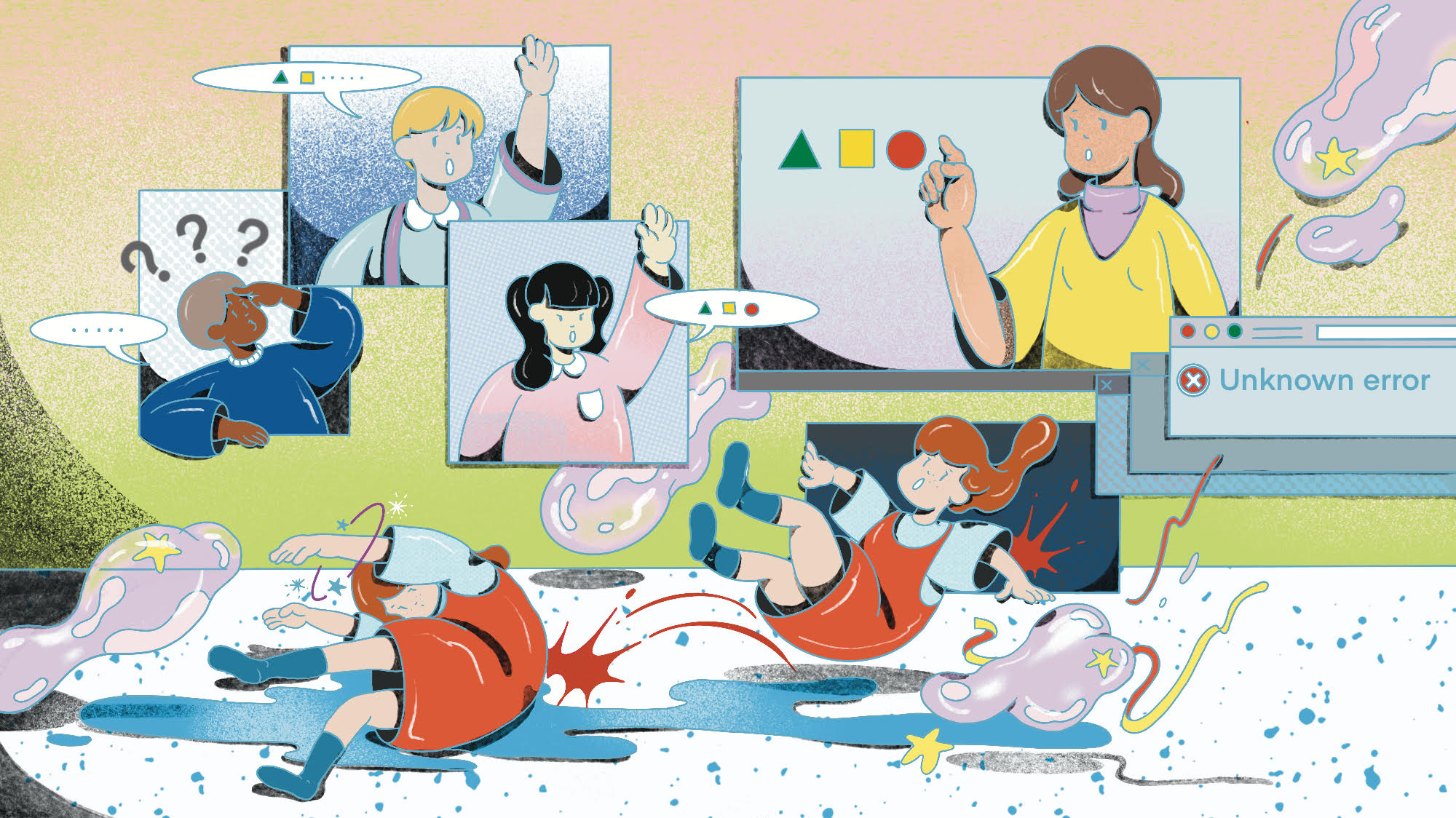Back in July 2019, the New York Times ran a story on an education nonprofit, Waterford.org, that had a novel idea: online preschool. I did a little digging and found that the organization was urging school districts to pick up its virtual program, Waterford Upstart. This seemed unlikely to fly. Surely no reasonable superintendent (let alone most parents) would choose screen time over circle time—much less spend precious public education funds on a dubious product. Right?
Never could I have predicted that about a year later my 4-year-old son would begin virtual public pre-K (though not through Waterford) in the form of two half-hour sessions a day. It did not go well. His teachers were warm and energetic, but overwhelmed. The internet connection at the school, where the teachers dialed in from, was unreliable. No one could figure out how to mute the kid whose house sounded like a wind tunnel. My son, bored and confused, took to announcing, “I HAVE TO POOP,” and whiling away the rest of the Zoom session in the bathroom.
Our frustrating experience wasn’t unique. Rutgers University’s National Institute for Early Education Research surveyed parents during the first year of the pandemic and found that among those whose children attended preschool in person, 80 percent said they were “very satisfied”—compared with just 42 percent of parents whose children attended virtual programs.
Despite those tepid reviews, the trend of virtual pre-K is only accelerating. From 2020 to 2021, Waterford Upstart’s users quadrupled; last year, it worked with kids in 28 states. While some of its programs are funded through philanthropic donations, some states use public education funds. Several teachers are using the program during public in-person class, as well. And Waterford is not the sole virtual preschool provider on the market. Growing Brilliant supplements its virtual lessons with IRL kits that families receive in the mail. ExcellED promises the hands-on benefits of Montessori programs, except on a computer screen.
These newcomers are part of a larger educational trend. In 2020, a RAND Corporation survey found that about 20 percent of school districts had or were anticipating permanent virtual options for K–12 students. According to one venture capital firm, VC investment in early childhood care and education companies more than doubled between 2020 and 2021.
There are some upsides to the rise of online education: For kids in rural communities (at least those with reliable internet access), maybe online preschool is better than none. And Kim Fischer, Waterford’s senior vice president of communications, says that the curriculum covers just one or two 15- to 20-minute screen sessions a day—it’s not a replacement for in-person programs facilitated by caregivers. “You think of a 4-year-old sitting in front of a computer for four hours—that’s not what we do,” she says. Yet experts worry that in some places, remote programs might soon replace in-person ones. That’s largely because online preschool programs are often far cheaper to administer: The yearly price of Waterford Upstart’s Columbus, Ohio, program, for example, runs $1,425 plus the cost of internet, whereas the median cost of a year of preschool or day care in the United States runs upward of $8,000 per student.
Yet for many families, public preschool is more than just prep for kindergarten—it’s a social service, points out W. Steven Barnett, senior co-director at the Rutgers early education institute. Virtual programs “do not provide nutritious meals or a safe secure environment for children living in difficult circumstances or even being homeless.” Beyond those practical concerns, Barnett argues that online preschools lack the most valuable experiences that in-person programs provide to students, like “exploration of the natural world, unstructured time in which they learn to take initiative, plan, and reflect on their activities, physical exercise, field trips to learn about the world around them.” And they don’t teach kids how to be in a group, how to manage their emotions, or how to navigate friendships. Without these soft skills, even a kid who knows letters and numbers could have trouble succeeding in kindergarten and beyond.
Waterford’s Fischer maintains that the program does support caregivers in teaching those skills. “We provide families ways to interact with their children daily,” she tells me. And the nonprofit makes some impressive academic claims—for example, a study in Utah found that the Waterford students did better on some measures of academic achievement than their non-Waterford counterparts through fourth grade. But Barnett notes that children in virtual programs may miss out on the chance to develop language and cognition skills during a critical developmental window. He worries that because of this gap, “there will not be lasting benefits.”
When my son returned to the classroom, some relics of online learning remained: He used iPad apps for reading and math, and storytime often took the form of someone reading a book aloud on YouTube. But he also made friends, played pretend, and traded Pokémon cards in after-school care. It’s hard to imagine that a virtual-only program would allow for anything close—but for thousands of kids across the country, that’s all that’s on offer. As early childhood moves online, those kids may end up on the wrong side of a new kind of digital divide.
This article has been updated.

















